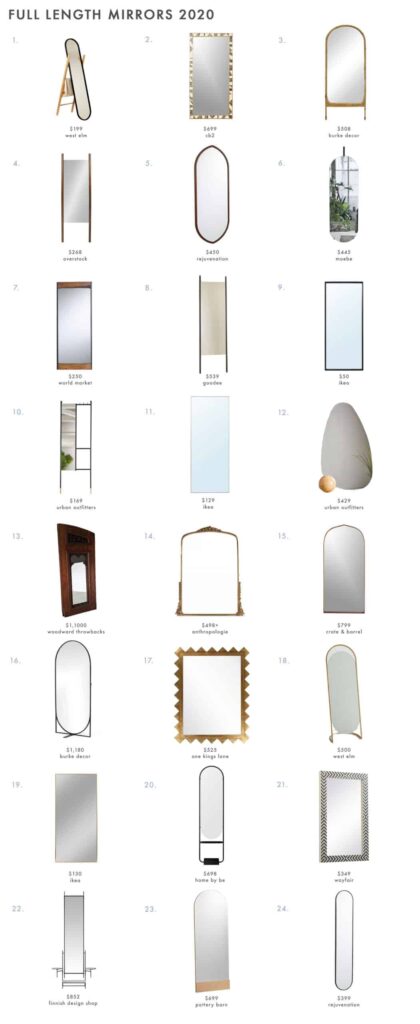
Mirrors are essential household items, reflecting our appearance and brightening up spaces. But when it comes to purchasing a mirror, you’re faced with a choice: go for a cheap mirror or invest in an expensive mirror. Both options have their pros and cons, and the best choice depends on your individual needs, budget, and priorities.
This article will delve into the key differences between cheap mirrors and expensive mirrors, outlining factors to consider when making your decision. We’ll explore the benefits of investing in a high-quality mirror, examine various types of mirrors available, and discuss how size and style can impact your choice. By the end, you’ll have a clearer understanding of which type of mirror is right for you.
Cheap Mirrors vs Expensive Mirrors
The most obvious difference between cheap mirrors and expensive mirrors lies in their price tag. Cheap mirrors are readily available at discount stores and online retailers, often costing less than $50. They typically feature basic construction with simple frames and minimal embellishments. On the other hand, expensive mirrors, which can range from hundreds to thousands of dollars, are crafted with higher-quality materials, intricate designs, and advanced features.
Beyond price, cheap mirrors may compromise on durability and longevity. The glass might be thinner and more prone to breakage, and the frame could be made of less sturdy materials that chip or fade over time. Expensive mirrors, however, are built to last. They utilize thicker, tempered glass for enhanced safety and resistance to damage. The frames are often constructed from durable metals like brass or wrought iron, ensuring longevity and aesthetic appeal.
Factors to Consider When Choosing a Mirror
When deciding between a cheap mirror and an expensive mirror, several factors should guide your decision:
- Intended Purpose: Consider how you’ll use the mirror. A simple cheap mirror might suffice for everyday grooming in a bathroom, while a larger, more decorative expensive mirror could enhance the ambiance of a living room or bedroom.
Size and Placement: Measure the space where the mirror will be placed to ensure it fits comfortably. A large expensive mirror can make a small room feel more spacious, while a smaller cheap mirror might be more suitable for a cramped area.
Style and Aesthetics: Mirrors come in various styles, from classic to contemporary. Choose a style that complements your existing décor and personal taste.
- Budget: Set a realistic budget before you start shopping. While expensive mirrors offer superior quality and features, cheap mirrors can provide adequate functionality at a lower cost.
Benefits of Expensive Mirrors
Investing in an expensive mirror offers several advantages:
- Superior Quality Materials: High-end mirrors are crafted with thicker, tempered glass that is more durable and resistant to breakage. The frames are often made from sturdy materials like brass or wrought iron, ensuring longevity and aesthetic appeal.
Enhanced Functionality: Many expensive mirrors feature additional functionalities such as anti-fogging, LED lighting, magnification, and Bluetooth connectivity. These features enhance usability and convenience.
Aesthetic Appeal: Expensive mirrors often boast intricate designs, ornate frames, and unique finishes that elevate the overall aesthetic of a room. They can serve as statement pieces and add a touch of luxury to your décor.
- Increased Resale Value: High-quality mirrors can increase the resale value of your home. Potential buyers appreciate well-crafted and durable fixtures that enhance the property’s appeal.
Types of Mirrors
Mirrors come in various types, each serving different purposes:
Wall Mirrors
These are the most common type of mirror, designed to be hung on walls. They range in size from small vanity mirrors to large statement pieces.
Floor Mirrors
Floor mirrors stand independently and provide a full-length view of your reflection. They are often used for dressing and checking outfits.
Vanity Mirrors
Vanity mirrors are typically smaller and mounted on a dresser or countertop. They often feature magnification for detailed grooming tasks.
Decorative Mirrors
These mirrors prioritize aesthetics over functionality. They come in various shapes, sizes, and designs to complement different décor styles.
Mirror Size and Style
The size and style of a mirror can significantly impact its visual effect:
Size: A large mirror can make a small room feel more spacious and airy. Conversely, a smaller mirror might be more suitable for a larger room to avoid overwhelming the space.
Style: Choose a mirror style that complements your existing décor. A classic ornate mirror might suit a traditional setting, while a sleek modern mirror would enhance a contemporary space.
Conclusion
Choosing between a cheap mirror and an expensive mirror involves weighing your needs, budget, and priorities. While cheap mirrors offer basic functionality at an affordable price, expensive mirrors provide superior quality, enhanced features, and lasting aesthetic appeal. Consider factors like intended purpose, size, style, and longevity to make an informed decision that best suits your requirements.
